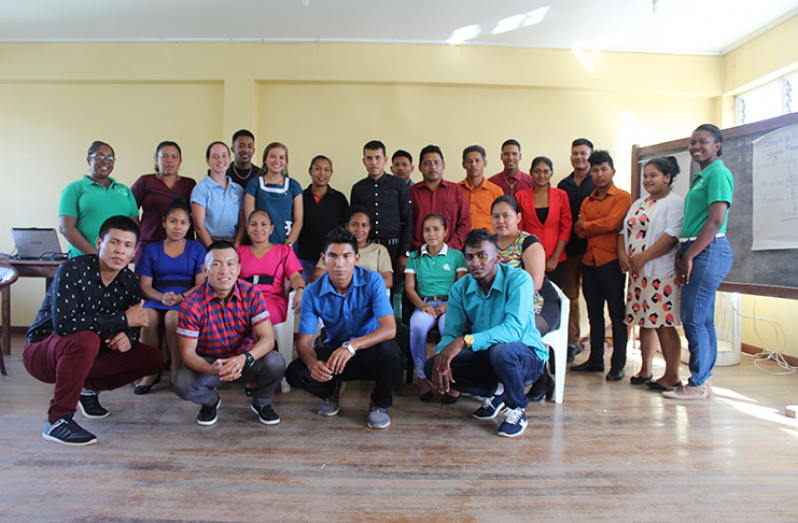“EDUCATION is the most powerful weapon which you can use to change the world.” Nelson Mandela. Moreover, according to the USEPA, “Environmental education is a process that allows individuals to explore environmental issues, engage in problem-solving, and take action to improve the environment.” As a result, individuals develop a deeper understanding of environmental issues and have the skills to make informed and responsible decisions.
We often teach children about various environmental issues but they leave the classroom and perpetuate the same negative habits they were just taught to repulse, a few moments ago. Why does this happen? Could it be that for most children learning is just abstract and there is no deep understanding of the issues/problems? Do we stimulate children to be problem solvers, rather than part of the problem? Do we evoke critical-thinking which would propel them to action?
If your answer is no, then you should examine the core components of environmental education listed below and analyse the results of this new approach to teaching:
* Awareness and sensitivity to the environment and environmental challenges;
* Knowledge and understanding of the environment and environmental challenges;
* Attitudes of concern for the environment and motivation to improve or maintain environmental quality;
* Skills to identify and help resolve environmental challenges; and
* Participation in activities that lead to the resolution of environmental challenges.
Environmental education allows the teacher to facilitate the learning process and students to analyse the empirical evidence presented from various perspectives to arrive at their positions.
Promoting sustainability through environmental/nature clubs
Environmental/nature clubs within schools, though not limited to schools, is an excellent avenue to develop attitudes, skills and behaviours needed to combat the negative environmental culture in Guyana. One might argue that this is a just a small drop in the ocean, but you would concur, several, frequent, consistent drops can create larger ripples. We are aware that complementary systems and enforcements of regulations need to be put in place to address pervasive issues such as waste management; however, systems can also be ineffective if we are not properly educated on how to make the best use of them.
A brief history of Environmental clubs in Guyana
The Environmental Protection Agency (EPA), with the support of the United Nations Development Programme (UNDP) launched an Environmental Education, Awareness and Capacity Building Programme in 1999. One of the major activities of this programme was the involvement of communities and youths in environmental activities through the formation of environmental clubs and groups.
From 2001 to 2002, over sixty clubs and community environmental groups were developed in all the regions of Guyana. The first environmental club to be affiliated to the EPA was the Santa Rosa Conservation Club in September 2000. These have since grown to over 100 hundred, however, keeping the clubs active and relevant has been a challenge and the Agency along with its partners over the years continue to provide much-needed support to clubs.
Collaboration with the Protected Areas Commission to revive/initiate clubs
The EPA in collaborated with the Protected Areas Commission (PAC), conducted a two-day training during November 26-27, 2019, in Santa Rosa for teachers of schools in the Moruca sub-region, Region 1. The training aimed to equip teachers with the knowledge or skills to form new clubs, revive existing ones and share experiences for overcoming challenges and sustaining environmental clubs.
Sixteen teachers from seven schools and five Rangers attached to the Protected Areas Commission (PAC) were exposed to topics such as: the Sustainable Development Goals (SDGs), the Green State Development Strategy and Education, climate change, waste management, biodiversity loss, water and sanitation, leadership, environmental games and programme planning, among others.
Delivering remarks at the simple opening ceremony was District Education Officer, Moruca Sub-region, Ms. Cliva Joseph who encouraged the participants to make good use of the opportunity. She also reinforced the value of sharing ideas and being bold about it.
As the Agency continues to underscore the value of environmental education in the early developmental stages of a child’s life, we will continue to work with Agencies, groups and individuals who want to see Guyana evolve as a spectacle of sustainability. In order to safeguard our myriad of resources and ensure a promising future, we must take stock of our actions and how we interact with our environment. The time to act is not tomorrow, the time is now!!!
You can share your ideas and questions by sending letters to: “Our Earth, Our Environment”, C/O ECEA Programme, Environmental Protection Agency, Ganges Street, Sophia, GEORGETOWN, or email us at: eit.epaguyana@gmail.com or follow us on Facebook and Instagram



.jpg)









